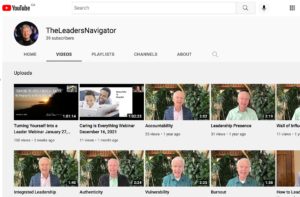THE INTEGRATED LEADER: Navigating Individuation with Connection
I was in a tech store the other day buying a new phone. Five people were in line getting assistance from a patient and bright young man behind the counter. A teenager came through the door and walked right past every person in line, completely oblivious to the queue. He abruptly and rudely interrupted the conversation between the sales rep and the customer and asked how much he could get for his phone.
This is an example of a problem that I see today in organizations, families, and practically everywhere I go in public. Some call it entitlement. Others say we are coddled. My parents would have said we’re spoiled.
And it isn’t just generational. We’re all spoiled. We’re spoiled by overabundance. We’re spoiled by convenience. We’re spoiled by being pampered. We’re spoiled by the freedoms we have that we take for granted. And it’s creating a lack of civility, weak character, a deficiency of personal responsibility, and an abundance of anxiety.
Leaders, from parents to presidents, have an opportunity and a responsibility to do something about it. Our work isn’t about going back to the “good old days,” that really weren’t so good. It’s not just about being “tougher” on people or less compassionate. What’s needed today is courageous leadership characterized by the attainment of two fundamental tasks: individuation and connection.
Individuated leaders are leaders who have the capacity to separate themselves from the emotions surrounding them. They are clear about their own principles and vision, independent of others, and don’t get caught up in the anxiety or entitlement behavior of others. They manage their own emotional reactions and remain poised under pressure. Rather than addressing entitlement by indulging it or reacting with rigid rules, they maintain clear boundaries, responsibilities, and consequences. Being individuated is not the same as being individualistic. Self-regulated and persistent in the face of resistance, they are committed to the greater good for all rather than the comfort for the few.
Connected leaders have the capacity to be present and connect with the people in their lives. Connection – the ability to be attuned and emotionally aligned with another – without yielding their principles, pleasing others, or rescuing people from their unhappiness – goes beyond emotional intelligence and empathy. Rather than being lost in emotions, connection means maintaining a grounded, non-anxious, and caring presence. A connected person is willing to be exposed and vulnerable, while risking displeasing those around them.
The Path Forward
Integrating being individuated with connection – called integrated leadership – is about harmonizing and amplifying the two. With clear principles and an unwavering vision, we can build families and organizations that inspire adventure, respect, maturity, and personal responsibility. This synergy allows leaders to maximize their unique gifts while building resilient, innovative, and inclusive organizations. In today’s complex world, the integrated leader—deeply principled, deeply connected—is not just desirable but necessary for transformational change.


